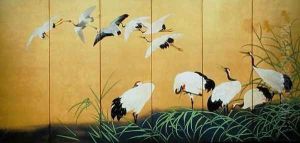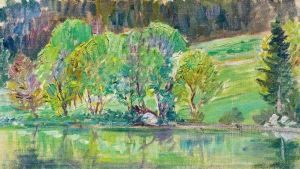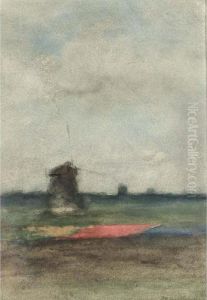





Japanese woman winding up a wall clock Edo Period 1600-1868 1700-50
-
About Reproduction
Discover the allure of art with our faithful reproduction of "Japanese woman winding up a wall clock Edo Period 1600-1868 1700-50", originally brought to life by the talented Sukenobu Nishikawa. Unlike posters or prints, our hand-painted oil painting breathes an unique sense of depth and texture into your space. Every detail, every stroke, and every texture is meticulously recreated, paying the perfect homage to Sukenobu Nishikawa and his artistic vision.
Owning this piece is more than just decoration - it's a statement of your refined taste in art. Let the vibrant colors and intricate details of this replica serve as a daily reminder of the beauty in our world. Elevate your decor and appreciate the richness of art with our replica of this masterpiece.
-
Painting Description
"Japanese Woman Winding up a Wall Clock (Edo Period 1600-1868, 1700-50)" is a woodblock print by Sukenobu Nishikawa (1671–1750), a renowned Japanese ukiyo-e artist known for his depictions of women and genre scenes from the Edo period. This particular print is a part of a larger body of work that illustrates the daily lives and activities of women during the Edo period, showcasing their roles and the cultural context of the time.
Sukenobu, also known as Nishikawa Sukenobu, was based in Kyoto and was noted for his distinctive style that diverged from the Edo (modern-day Tokyo) based ukiyo-e artists. His works were influential in the development of the "bijinga" genre, which literally means "pictures of beautiful women." Unlike many of his contemporaries who focused on the courtesans and urban life of Edo, Sukenobu's prints often portrayed the genteel women of Kyoto, providing a unique perspective on the customs and fashions of the imperial capital.
The print "Japanese Woman Winding up a Wall Clock" is significant for its depiction of a domestic scene, which includes a woman engaging with a wall clock. The presence of a clock in the artwork is particularly noteworthy, as it reflects the introduction and assimilation of Western technologies into Japanese life during the Edo period. This period was characterized by sakoku, Japan's policy of isolation, but despite this, some Western goods and ideas still managed to influence Japanese culture.
The artwork is executed with the finesse typical of Sukenobu's style, capturing the elegance and subtlety of the subject. The woman's attire and the interior elements are rendered with attention to detail, providing insights into the aesthetic and material culture of the time. The print is not only a work of art but also an important historical document that contributes to our understanding of the period's social history and the role of women within it.
As an ukiyo-e print, "Japanese Woman Winding up a Wall Clock" would have been produced through a collaborative process involving the artist, the carver, the printer, and the publisher. This collaborative nature is a hallmark of the ukiyo-e tradition, with each print being the result of multiple skilled artisans working together to create the final product.
Today, Sukenobu's works are considered important cultural artifacts and are held in various collections around the world, offering a window into the world of Edo-period Japan and the artistic traditions that flourished during this time.
-
Lead Time & Shipping
When you order this oil painting replica, it typically takes 2-3 weeks to paint. If the artwork is more complex, it might need a little more time to ensure the best quality. Once it's ready, we'll send you a photo for your approval. After you give the green light, we'll ship it to you for free.
-
Return & Refund
We believe in the quality of our hand-painted oil painting reproductions, and your satisfaction is our priority. If for any reason, you are not completely satisfied with your purchase, we offer a 45-day return policy. You can return your artwork within 45 days of receipt and receive a full refund. Please note that the artwork must be returned in the original packaging and in the same condition as it was received.




















